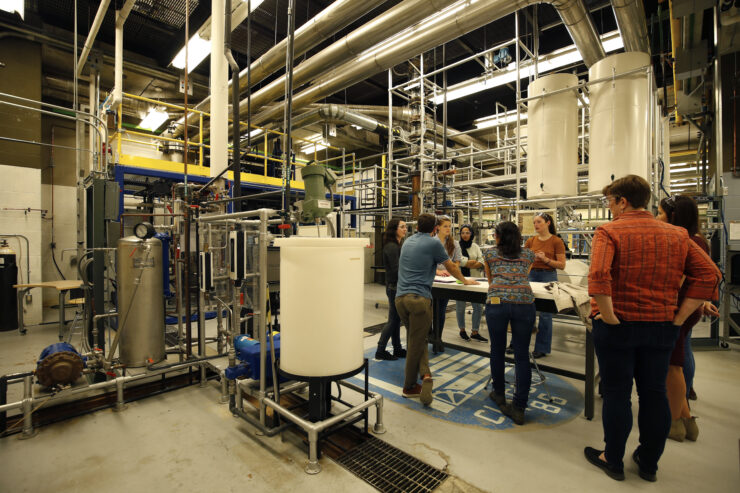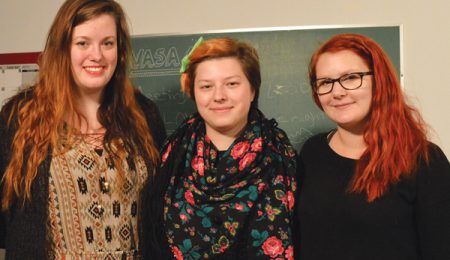U of O students explore relationship between earth and humankind in Transient
On Dec. 1, students at the University of Ottawa will host an exhibition that explores the intersection of climate science, chemistry, and fine art. The event, titled Transient, seeks to examine the relationship between earth and humankind in the Anthropocene—a new epoch in Earth’s history in which humans are the primary factor in our planet’s climate and ecological systems.
The show will explore the harm that industrialisation has caused to the planet, but also bring an element of hope by drawing attention to some of the sustainability research done by the U of O’s department of chemistry and biological engineering.
Rame Abdulkader, a fourth-year visual arts student, is one of the coordinators for the project. She explained that the project directly engages with research and the hard sciences in several ways, including hosting the event in the chemical pilot plant.
“The main theme is the Anthropocene. It challenges how we view the world now and what we can do about it,” Abdulkader said. “The art looks at our epoch, the time we are looking at right now while the experiments here are also related to that … and the space is really unconventional and gets art out of a gallery space.”
She hopes that the exhibit can help bridge a gap between the arts and sciences, arguing that they complement each other more than people might suspect.
“I think there is this idea that the arts and the sciences are very much different, but they are very much interconnected,” said Abdulkader. “Because in both of them you have to think abstractly. They can be compatible if people can just think the right way—you need to be open-minded to it and think outside your field.”
“There are other connections too—we have artists that are expressing that humans have played a real role in the environment,” said Leanne Belle, a fourth-year visual arts and history student and exhibit co-coordinator. “Meanwhile, we have scientists at the school who are looking at ways to improve human sustainability. So there really is a connection there—they share the same goals. It’s just two different ways of getting there, two different approaches to the same thing.”
The coordinators hope that through a combination of artistic, human expression, and hard scientific data, people from all fields might develop a better appreciation for humanity’s role in this world.
“I think a lot of engineering students don’t get a chance to really experience fine art and I hope that this can maybe open their eyes that you can be an artist and be knowledgeable,” Abdulkader said. “I would also like to see artists applying science and techniques to their work, which we see in some of the work here.”
Transient is open to the public free of charge on Dec. 1 from 5:30 to 10 p.m. Colonel By Hall room D415.





